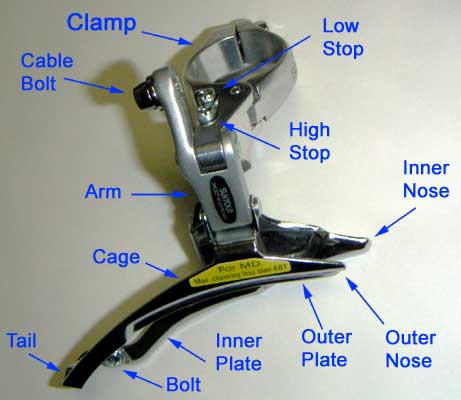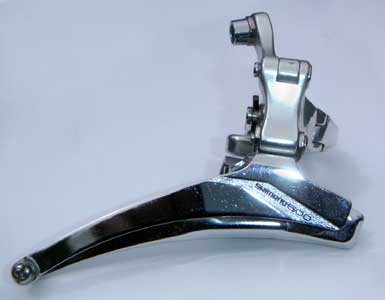The good thing is
that almost all triple derailleurs have enough travel to handle four
chainrings as long as the crankset is in the proper position.
The basic problem is that derailleur cages are not designed to handle
very large and very small chainrings at the same time.
Raising the derailleur to clear a large outer chainring means the back
of the cage is also raised and when you try to run a small triple or
quad the chain may drag on the bottom of the cage.
Sometimes you can cut the outer plate to match the outer
chainring exactly, which will let you drop the derailleur some.
For example if the derailleur is designed to handle 52 teeth and you
outer ring is only 46, you have quite a bit to play with.
The next option is to extend the bottom end of the cage.
In extreme cases, I've made the entire cage from scratch.
If you want to run 5 chainrings, you will probably have to modify the
stops or make new, longer arms.
Key Points you would ideally like to
achieve:
- the outer plate should
clear the teeth of the large chainring by ~ 1mm
- the inner plate should just
clear the middle (2nd largest) chainring
- the cage should be stiff
enough that it doesn't flex while shifting
- the cage should lift the
chain more than push it
- the chain must not rub on
the sides of the cage once the shift is completed
- the chain must not rub on
the tail of the cage
- the top of the chain must
not rub on the top of the cage
- the tail of the cage
should not touch the chainstay
- the tail of the cage must
not hit the tire (keep in mind the widest tire you want to use)
- on suspended bikes, the
cage cannot hit any part of the frame through the entire range of the
suspension
Sound complicated? It's
really not that bad. Most of this will already be taken care of -
just points to consider.
|



